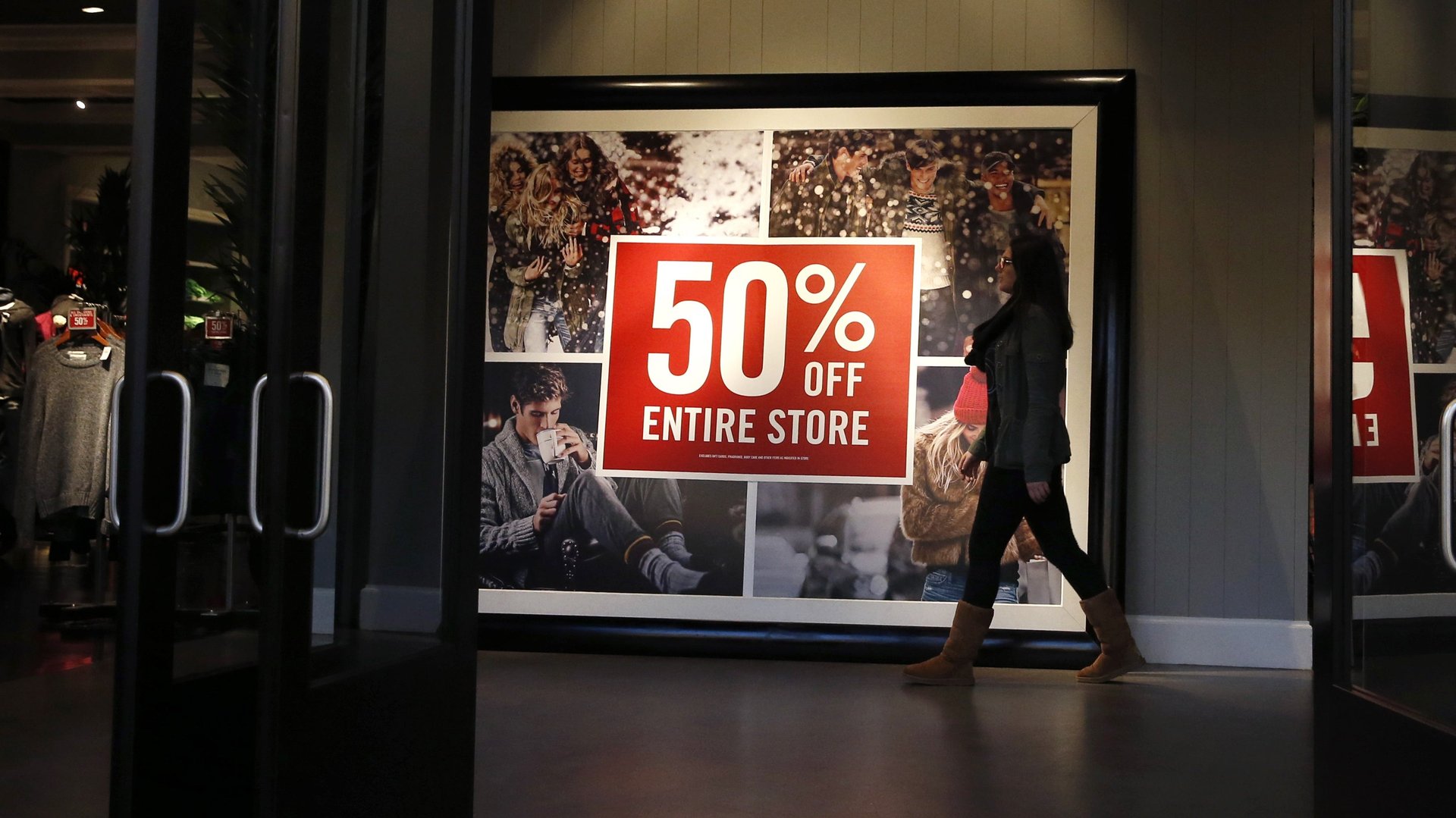Customers are no longer willing to pay full price for clothing
A three-year study (pdf) that tracked clothing costs versus what global consumers are willing to pay has some bad news for fashion retailers: “On average, across all womenswear categories tested between January 2013 and June 2016, consumers were willing to pay only 76% of full price.”


A three-year study (pdf) that tracked clothing costs versus what global consumers are willing to pay has some bad news for fashion retailers: “On average, across all womenswear categories tested between January 2013 and June 2016, consumers were willing to pay only 76% of full price.”
The study, conducted by Fung Global Retail & Technology and First Insight, underscores the pressure to discount that the growth of off-price retail and wide availability of cheap, fast fashion has put on retailers including Gap, J.Crew and Macy’s. Even labels such as Michael Kors and Coach are now fighting to convince customers to buy at full price again after years of marking down products to move them off the shelves. Of course, many brands certainly own the responsibility for their poor sales—it’s hard to sell a blazer that a woman can’t get her arms into at any price.
The joint study looked at more than 57,000 women’s apparel and accessories items that First Insight tested with consumers in 11 countries, including China, France, Germany, the UK, the US, Mexico, and Poland. It found that clothing prices for many categories were decreasing, but so too were the dollar amounts shoppers were willing to spend.
“This overall trend aligns with the increasingly promotional nature of retail, the impact of multi-channel selling, and off-price retail and fast-fashion retail,” the study stated.
One of the big exceptions, however, was athleisure. Within the category of bottoms, which includes items such as jeans and skirts, the subcategory with the least price resistance was knit bottoms, which the study says was largely made up of activewear. Consumers were willing to pay 82% of the planned retail prices for them, even though knit bottoms saw “significant price increases over the period.” Leggings were another subcategory that shoppers were willing to pay for.
The results make sense given that membership at a fancy gym is now a status symbol. People want equally fancy workout clothes that look good outside the gym as well.
Similarly, shoppers were willing to pay closer to retail for sneakers than any other category of footwear, and it’s not because these items were generally cheaper than others. “In footwear, the average test price for sneakers in 2016 was higher than the average test prices for 4 of the 7 subcategories evaluated,” a spokesperson for First Insight explained in an email. “Likewise for knit bottoms, where the average test price was higher than all the other subcategories.”
The results align with a wider trend in dress toward comfort and function. The performance qualities of activewear are part of what have made the trend attractive to shoppers, whether they’re buying gym clothes or performance-fabric dress shirts. The survey said it expects more growth in athleisure, “and an overall emphasis on incorporating performance technologies into workwear and streetwear.”
Sorry, yoga-pants haters. If customers are willing to pay for them, you can be sure they aren’t going away just yet.